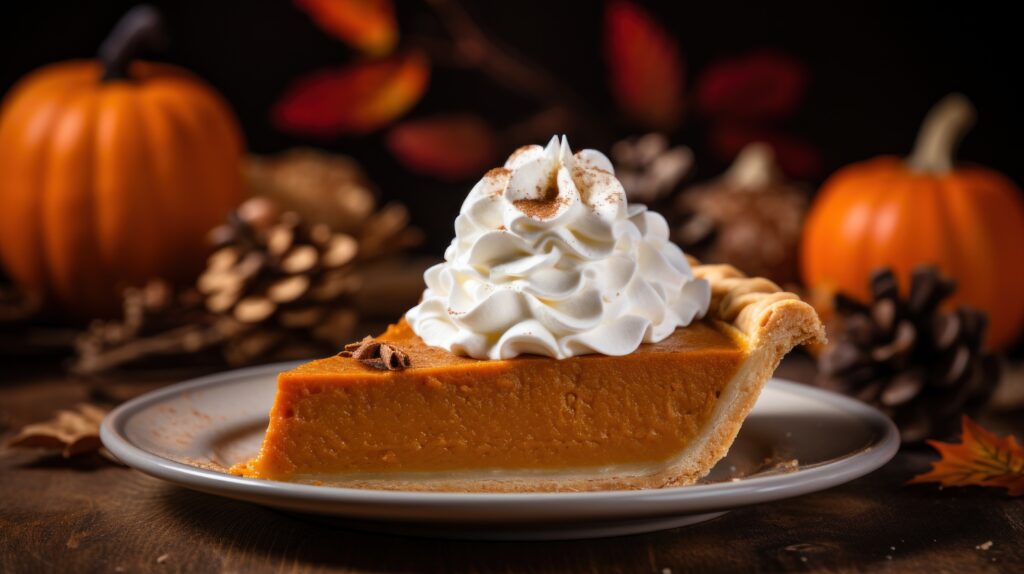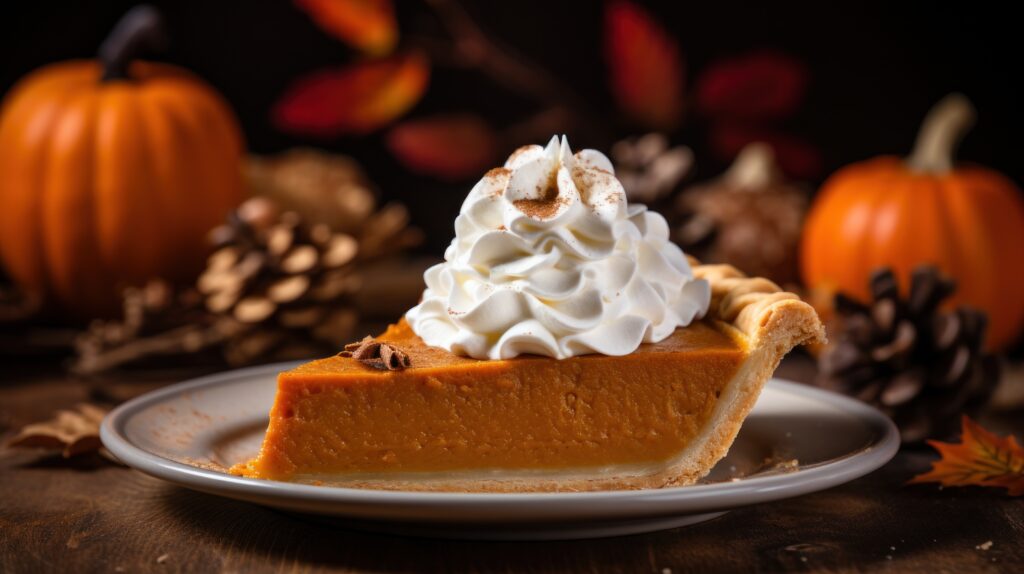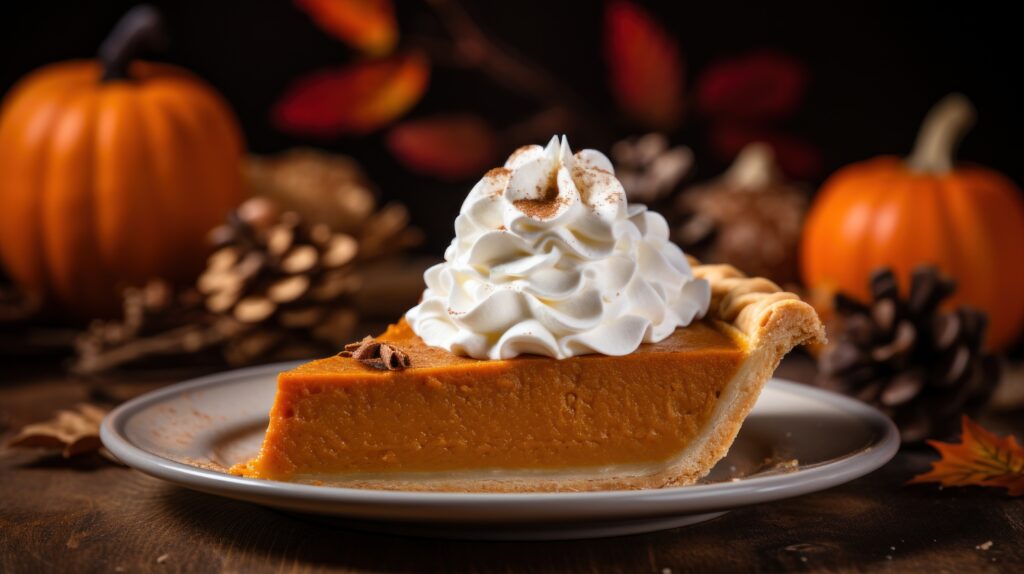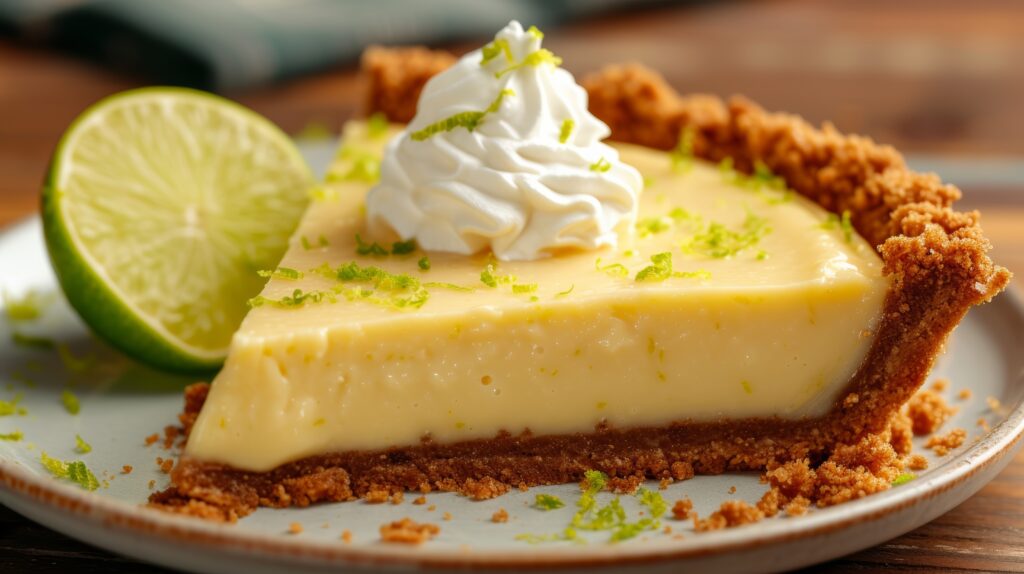🥧 A Slice of Gold: Why Pumpkin Pie and Whipped Cream Feels Like Home

There’s something magical about a warm slice of pumpkin pie topped with freshly whipped cream—a moment that tastes of familiar kitchens, gentle family gatherings, and the soft glow of autumn light. The sweet‑spiced filling nestled in golden crust, the cool sweetness of cream melting into every forkful… it’s indulgent yet tender, festive yet timeless.
However you’ve come to this dessert—whether through Thanksgiving traditions or cozy autumn habits—there’s no denying that pumpkin pie with whipped cream is nearly as comforting as a memory: warm, well‑spiced, and wrapped in nostalgia.
1. From Seed to Spoon: A Short History of Pumpkin Pie
Even though pumpkins grew wild throughout North America, the modern pumpkin pie as we know it wasn’t served at the first Thanksgiving in 1621—instead, settlers likely roasted or stewed a hollowed pumpkin filled with milk, honey, and spices over hot ashes.
By the early 1700s, pumpkin pie began to appear on New England tables alongside traditional harvest meals. One Connecticut town even postponed Thanksgiving in 1705 due to a shortage of molasses—needed for making enough pie filling. The recipe most similar to today’s custard‑filled version appears in American Cookery, published in 1796 by Amelia Simmons, featuring a pumpkin pudding spiced with nutmeg and allspice in a crust.
Over the 19th century, pumpkin pie rapidly became a fixture on holiday tables and is now widely considered the iconic finale to Thanksgiving and Christmas meals in the United States and Canada.
Table of Contents
2. The Ingredients That Bring a Pie to Life
🥧 The Filling
- Pumpkin purée: Choose canned or homemade purée made from pie‑variety squash; it provides a smooth texture and concentrated flavor.
- Dairy: A blend of eggs, heavy cream (or evaporated milk), and sugar forms a silky custard.
- Spices: Cinnamon, ginger, nutmeg, and cloves or allspice—often pre‑mixed as “pumpkin pie spice”—create that classic aroma.
- Sweetness: Granulated sugar or brown sugar adds depth while balancing the earthy pumpkin.
🥧 The Crust
- All‑butter or pastry crust: Flaky and golden, typically prebaked (“blind‑baked”) to prevent sogginess when filled.
- Optional graham‑cracker or gingersnap crust: For faster assembly or a flavorful twist.
🥄 Whipped Cream
- Chilled heavy whipping cream (30–36 % fat): the base that whips light and billowy.
- Powdered sugar + vanilla: Sweetens and flavors without graininess.
- Stabilizers like cornstarch or cream of tartar (optional)—these help whipped peaks hold shape for hours.
3. Step-by-Step: Baking the Perfect Pie

🥣 A. Blind‑Baking the Crust
- Preheat oven to 350 °F (175 °C)—ensure accuracy; over‑ or under‑temperature can unset the custard.
- Roll pastry into a 9″ pie dish. Prick the bottom with a fork, line with parchment, and fill with pie weights or dried beans. Bake 12–15 minutes until set and just golden.
- Remove weights and parchment, prick gently again, then bake another 3–5 minutes. Set aside to cool slightly.
🥣 B. Mixing the Filling
- Beat 3 eggs in a bowl. Add 1 cup sugar, whisk lightly.
- Stir in 15 oz (425 g) pumpkin purée, ½ cup evaporated milk (or heavy cream), and pumpkin spice to taste. A little vanilla extract adds extra warmth.
- Mix gently until uniform—over‑aeration can cause cracking later.
🥣 C. Baking the Pie
- Pour filling into the warm crust. Tap gently to release air.
- Bake for 40–50 minutes: the edges should be set; the center will still jiggle slightly. Avoid over‑baking, which leads to dryness or cracks.
🥣 D. Cool It Right
- Let the pie cool gradually inside the turned‑off oven with the door ajar—this reduces the risk of a cracked surface.
- After 30 minutes, remove and cool completely at room temperature before chilling. Refrigerate at least 2 hours (or overnight) to set the custard.
4. How to Whip Cream Like a Pro
Pour 1 cup extra‑cold heavy cream, 2 tbsp powdered sugar, and 1 tsp vanilla extract into a chilled mixing bowl. Use a whisk attachment or balloon whisk:
- Whip at medium‑high speed, until soft peaks form—when the cream lifts and holds shape with a slight bend.
- For longer‑lasting whipped cream, mix 1 Tbsp powdered sugar with ½ tsp cornstarch before adding—dissolves into the cream and stabilizes smoothly.
Spoon or pipe the cream around the edge of chilled slices, letting that cloud‑like pillow cascade over the edge as you serve.
5. Troubleshooting & Tips from the Kitchen
- Avoid cracks: Don’t overheat; stop baking while the center is still slightly wobbly. Cool slowly inside the oven to minimize shrinkage and cracks.
- Custard ends up soggy?: Ensure crust is fully blind‑baked and cooled slightly before filling.
- Crumbly crust: Press firmly into the edges and don’t skip chilling if using butter crust.
- Over‑aerated filling: Lowers density and stability—gently mix ingredients.
- Weak peaks in whipped cream?: Ensure cream and bowl are cold. Wait until very cold cream and whip on medium‑high speed.
6. Nutrition Snapshot: Enjoy in Balance 🍂
A typical slice (1/8 of a 9″ pie) clocks in around 300–320 calories, with roughly 14 g fat, 40–46 g carbohydrates, and 6–7 g protein. Most pie varieties are good sources of vitamin A, thanks to pumpkin—upwards of 70 % DV per slice.
According to one compare‑chart, pumpkin pie has slightly fewer calories than deep‑dish apple pie, and fewer added sugars, depending on the recipe eatingwell.com.
If you’re serving whipped cream, be mindful: each dollop adds richness, sweetness, and calories—though it’s small luxury that can make each bite taste more indulgent and festive.
7. Variations That Add Wow
| Variation | What It Brings |
|---|---|
| Ginger‑brown butter crust | Toasty nutty warmth with extra spice |
| Pecan topping or streusel | Crunch and texture |
| Half‑and‑half or oat milk (for dairy‑free) | Similar custard richness |
| Pumpkin‑maple nougatine drizzle | Deep sweetness and flair |
| Mini tartlets | Perfect party portions |
Swap classic crust for gluten‑free pastry or skip crust entirely and turn this into a footed custard bowl—just bake filling in a heat‑proof dish without crust if you’re keeping it grain‑free.
8. How to Serve, and What to Sip
- Serve slices with a flourish: swirl whipped cream, grate a little nutmeg on top, or rest thin orange zest on cream.
- Partner with warm drinks: a cup of cinnamon‑spiced coffee or dark‑roast espresso creates a cozy balance with sweet pie. Or pour a crisp late‑harvest Riesling or sherry for refined contrast.
- Side fresh: a small serving of ruby‑red cranberry compote, rosemary‑poached pears, or pumpkin‑seed brittle keeps the flavors connected yet light.
9. A Slice of Tradition in Every Bite
Every holiday season, pumpkin pie reappears—on tables both elaborate and humble. Growing up, I remember my grandmother gently placing pie in the windowed cart as the oven cooled on the porch so the light could catch it just right. Then, on Thanksgiving morning, she let us taste test whipped cream between zest-laden mugs of cider.
And at college? I once whipped up pie filling in a dorm kitchen (no oven—classical compost pie!), topped it with whipped cream, and shared it in mug-sized servings to everyone’s delight. We closed our eyes and called it “pumpkin pie of memory no bake edition”—if only for nostalgia.
10. Frequently Asked Questions (FAQ)
Can I use canned or fresh pumpkin purée?
Both work. Canned pumpkin is consistent and time‑saving. Homemade from pie pumpkins may be fresher in flavor, but ensure it’s well‑strained before using.
What if my pie cracks?
Don’t panic! Cover the crack artistically with extra whipped cream, chopped pecans, or dollops of caramel.
Why does my filling sometimes separate or sink?
This can happen if oven temp is too hot or center cools rapidly. Bake slightly underdone in the middle and let it cool slowly in the oven to firm up without collapsing.
Can I refrigerate leftovers?
Absolutely. Wrap tightly—pie stays good for 3–4 days. Fresh whipped cream should be added just before serving again.
🍁 Final Thoughts: Pie Is Love, in Crust and Custard

This pumpkin pie with whipped cream is so much more than dessert—it’s tradition embodied in a slice. In every warmly spiced mouthful, you taste ancient seeds, colonial ingenuity, New England harvests, and the simple bakery‑like comfort of home.
So whether you make it for Thanksgiving, a Sunday supper in fall, or just because a cool breeze whispered “apple and cinnamon,” know this: you’ve crafted something cozy and ceremonial.
Gather around. Sprinkle nutmeg. Pass the pie. Lift the whipped cream swirl, take a slow bite, close your eyes—and savor the sweetness of memory made manifest in custard and crust.
Try this today also:
Key Lime Pie Recipe

